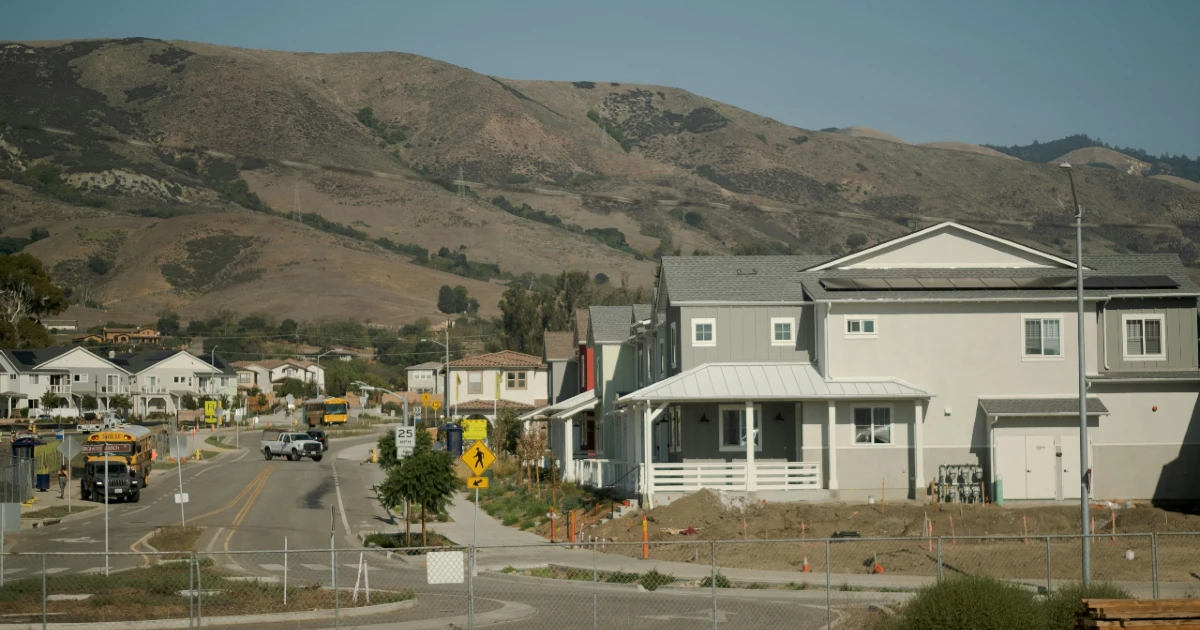A recent study revealed that an estimated 60 million Americans live in the path of potential hurricanes. If you own properties along the eastern coastline, there's a high chance that those properties are at risk.
What can you do to protect yourself, your properties, and your tenants from hurricanes? Understanding how hurricanes work and when they're coming is a good place to start. Getting landlord insurance for rental property should be your next step.
To raise awareness of hurricanes and the damage they can cause to residential properties, we will take a closer look at hurricane names. Where do they come from, and why?
Read on to learn more about hurricane names. Then, stick around to find out why landlord insurance is crucial for property owners affected by hurricane season.
Why Do We Name Hurricanes?
North America is hit with severe storms every single year. In recent years, the average number of tropical storms and hurricanes has increased--and scientists predict that this trend will continue. During the warmer months, it's not uncommon for multiple storms to set in motion simultaneously.
The key to naming hurricanes is communication. Meteorologists, emergency responders, and researchers can communicate with clarity and speed by naming these storm systems. Local governments can alert the citizens in potentially affected areas, lead evacuations, and more.
In other words, naming dangerous storm systems makes it easier to communicate where that storm is and where it's headed.
Are Hurricanes the Only Storm Systems That Get Names?
It's important to note that hurricanes aren't the only storm systems that receive a name. In fact, a hurricane is a tropical storm that has increased from a minimum of 39 mph winds to 74 mph winds.
When this occurs, the storm system will maintain the same name. For example, if Tropical Storm Irma became a hurricane, we would then call it Hurricane Irma.
When Did the Practice of Naming Hurricanes Begin?
The practice of naming hurricanes isn't new. In fact, it's been going on for hundreds of years.
It seems that the practice may have begun in the Caribbean Islands. As hurricanes struck the land, they were given the name of the saint who corresponded with the Roman Catholic liturgical calendar. If a storm struck on the same day in different years, they would be given the same name followed by "the first," "the second," and so forth.
Naming Storms by Latitude and Longitude
The United States did not catch on to naming hurricanes and other storms quite as early. As the field of meteorology developed, scientists named storms after the latitude and longitude, designating the storm's origination.
The problem, however, was that this system was both confusing and challenging to communicate. People made mistakes, and storms were mixed up, revealing that the system wasn't effective.
Military Meteorologists and Women's Names for Hurricanes
Meteorologists located in the Pacific during WWII were the first Americans to start using names to identify storms. At the time, they used women's names only.In 1953, the National Hurricane Center in charge of tracking hurricanes in the Atlantic adopted the same practice. They quickly found that doing so improved communication and helped raise national awareness of these dangerous storms.
Adopting Men's Names in the 1970s
In the 1970s, meteorologists started using men's names (in addition to women's names) to identify and track hurricanes. The system put in place around this time is quite similar to the one we use today.
How Do We Name Hurricanes Today?
You may have noticed that each year, the names of hurricanes correspond with the alphabet letters. In other words, the first hurricane of the year will receive a name beginning with the letter A. The next hurricane will receive a name starting with the letter B, and so on.
These names are already established, which is why you've probably heard the same hurricane names more than once. We keep six lists of hurricane names that we rotate through over the course of six years. There are 21 names per list.
Why do we only have 21 names per list if there are 26 letters in the alphabet? To keep things simple, we do not give hurricanes names that begin with the letters Q, U, X, Y, or Z.
What If There Are More Than 21 Storms in a Year?
There was once a time when it was unlikely to surpass 21 tropical storms and hurricanes per year. Now, however, the possibility is more present than before.If we surpass 21 storms that receive names in one year, meteorologists rely on an alternate list. Why don't they move on to one of the other six lists in regular rotation? By using an alternate list, it's easier to track the years that were hit by a more significant number of storms.
When Do Hurricane Names Enter Retirement?
Most hurricane names can indeed get reused every six years. However, there are exceptions. The US government can decide to retire specific hurricane names.
When does this occur? Hurricane names would undergo retirement if they were recently used to describe a particularly devastating storm. Looking at the complete list of retired names, you're likely to remember quite a few--including Katrina in 2005 and Sandy in 2012.
Why do we retire these names? Using names like Katrina or Sandy to describe future hurricanes would be insensitive to those who were affected.
How Hurricane Names Can Help Landlords
Why is this information pertinent to you as a landlord? Not only are hurricanes growing in strength and numbers, but they're also growing in scope. In other words, it is becoming more of a possibility that previously unaffected areas could now lie in the path of a hurricane.
By keeping track of the hurricanes that may head toward your area, you can monitor your properties. You can keep track of any evacuation notices that may impact your tenants and prepare for any residual damage. Getting the right landlord insurance policy can help.
Why Landlord Insurance Is Crucial for Coastal Property Owners

Our goal is to make sure that you have the right coverage and protection for the properties you insure. In other words, we're not creating a one-size-fits-all landlord insurance policy. We're taking the time to learn about your property and its unique risks to build an insurance plan that will keep your investments safe.
What are some of the ways that a landlord insurance policy is crucial to the success of a coastal property owner? Let's take a look.
Covering the Cost to Rebuild
One of the most common and detrimental sources of damage after a hurricane is wind. Winds above 74 mph can damage the roof, windows, landscaping, and siding of a property. Trying to rebuild after a hurricane can come with costs that exceed your emergency maintenance fund.
Tip: With the right landlord insurance plan, you can receive the coverage you need to rebuild without going into debt.
Protecting You From Liability
What happens if your tenants are still living in your house or apartment building when it requires repairs after a hurricane? Worse still, what happens if one of them gets injured due to property damage?
It's easy to assume that your tenants won't sue you as you're dealing with the aftermath of a hurricane. Yet, this type of liability is always on the table.
Tip: With landlord insurance, you don't have to have a fear of liability hovering over your head. Your insurance provider incurs the financial risk so that you can focus on the wellbeing of your tenants and your properties.
Making Up for Your Loss of Rental Income
The reality is that when your properties lie in the path of hurricanes, you need a safety net protecting you from lost rental income. You can't control whether or not the neighborhood gets evacuated or your properties undergo severe damage. You can't predict whether or not you'll make it through hurricane season with habitable properties.
Any landlord knows that when that rental income disappears, it's difficult to sustain those properties. You've worked hard to find a balance between income and investments.
Tip: Landlord insurance can ensure that you don't lose all of your hard work after a single storm.
Get Insured With Steadily
Hurricane names are chosen and dispersed to make it easier to communicate about where the storm is heading. If you have properties along or near the coastline, paying attention to hurricanes has to become second nature. If you want to increase your protection against unstoppable forces like storm systems, get a free quote and ask about our coverage today!






.png)
.jpg)
.jpg)


.png)